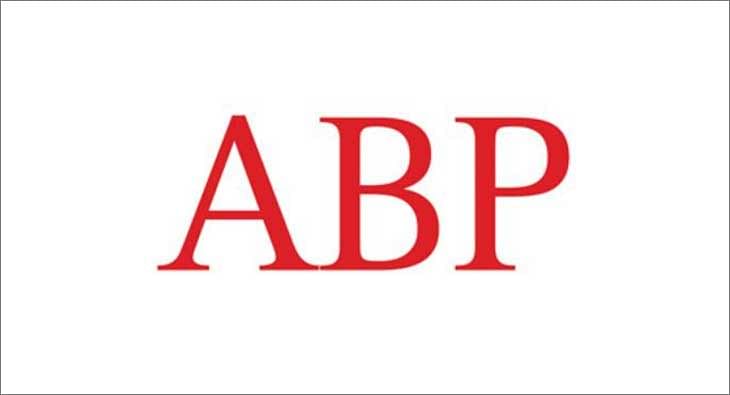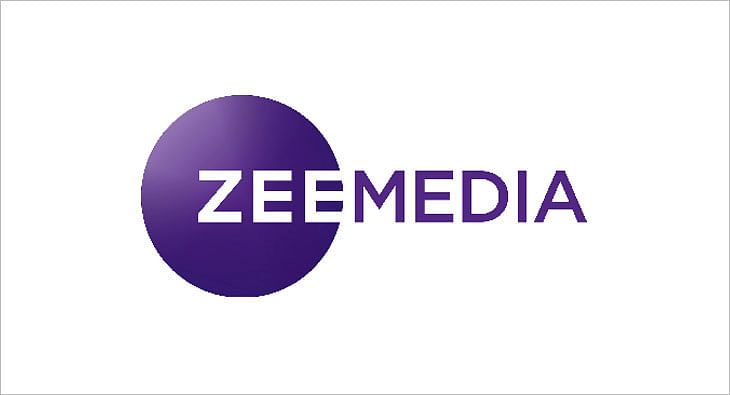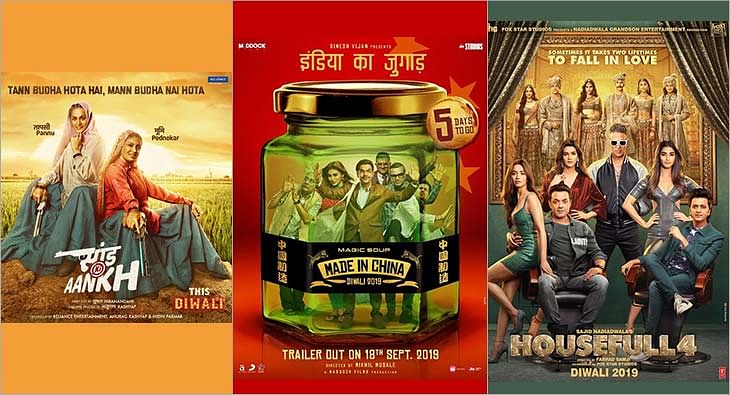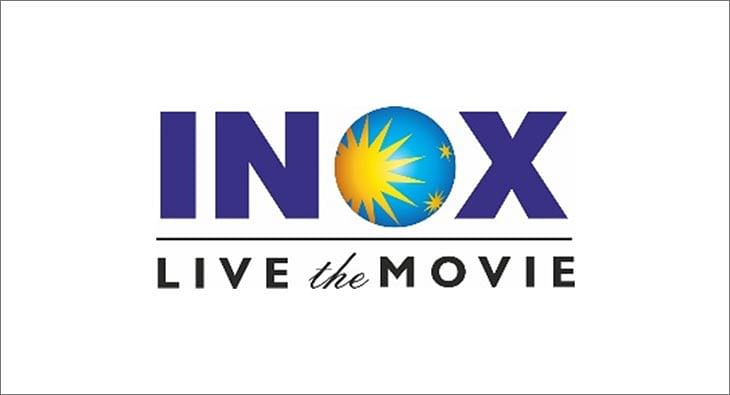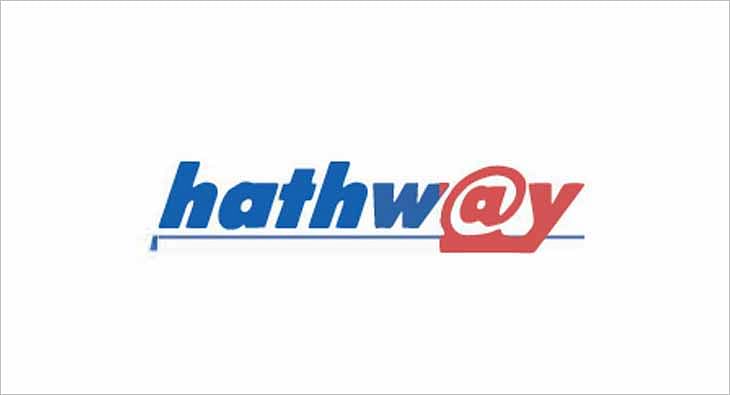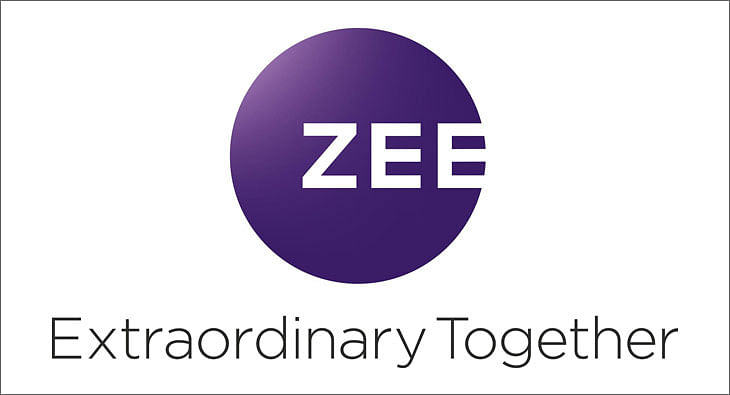Guest Article Retrofit: RAW, Indian media & a lengthy, strange story...
“Call it propaganda or plain wishful thinking. Or maybe it is a pie in the sky. Purportedly an investigation. The other day I stumbled upon a very lengthy, but strange story in Pakistan’s Daily Mail that highlighted the role of India’s external intel agency RAW in propping up Indian media...” writes veteran journalist Sandeep Bamzai as he questions an international report that, amongst other allegations, called Zee TV a RAW-funded operation.

Call it propaganda or plain wishful thinking. Or maybe it is a pie in the sky. Purportedly an investigation. The other day I stumbled upon a very lengthy, but strange story in Pakistan’s Daily Mail. Written by someone not less than the paper’s Editor-in-Chief, with additional reporting by Christina Palmer in New Delhi, Sandra Johnson in Washington D.C and Cherry Ferguson in London, it highlighted the role of India’s external intel agency RAW in propping up Indian media.
It made some wild allegations -- most notably that Subhash Chandra’s Zee TV is a RAW-funded operation. But more on that a bit later. It also speculated about something called SAFMA, and the role that it was playing at the behest of RAW. As someone who grew up reading John Le Carre, most of the report read like a George Smiley and Karla espionage and counter espionage operation. Diatribe, but with some semblance of truth.
Babar wrote that the “media is immensely used to propagate one’s views and perception. The media endeavours are extensively manipulated to change the world opinion in (one’s) own favour and against the enemy. Almost all the governments have given a free hand to their respective intelligence agencies to manipulate media and fund the media organisations and individuals to gain the required results. No matter if it is the CNN journalists embedded in US troops, invading Iraq or venom emitting Indian journalists and TV anchors targeting Pakistan after the Mumbai carnage, the Intelligence hands are always there to direct them and to fund them.”
While it is well-known that Indian intel agencies - RAW and IB - have used media personnel to further their cause, it was a little difficult to fathom how Zee could have been architected by RAW. Babar went on to paint RAW in a hue, hitherto unheard of and unknown. According to Daily Mail’s big-ticket investigative report, Indian intelligence agency Research and Analysis Wing (RAW) used this tactic first almost 30 years back. The report stated: “In the mid-80s, when Rajiv Gandhi was the Prime Minister of India, RAW sent a media related proposal to the Prime Minister’s Office (PMO), which was straight away approved. According to this proposal, RAW was given a free hand to use as much as required funds to make a solid grip on national and international media. Initially, RAW came up with a long term project through which, it started short listing young, potential and ambitious Indian journalists and later started penetrating them to different media organisations across the world. Today, according to rough estimate, 90 per cent of the Indian or Indian origin journalists working in different media organisations throughout the world, are those having the RAW blessings and one way or the other, promoting Indian perception and delivering to the RAW's requirements. The success of RAW in this direction can be gauged from one fact that it has managed to get Indian journalists inducted even in leading Chinese media organisations like the China Daily, the Beijing Review etc.”
While this may be partly true, the extent of the penetration that the Daily Mail has painted leaves one in a tizzy. Sounded a little fanciful. I guess Indian correspondents in sensitive foreign locations may be paying attention to RAW diktats, but it is difficult to comprehend that just about every self-respecting journalist would be on RAW or IB's payroll. Or taking dictation from intel agencies. Diplomatic and foreign correspondents would definitely be influenced because they would have to toe-the-India-line, and would probably be getting vital tip-offs. And this would be the right thing to do. For India will have to come first.
The Daily Mail report then suggested, “In the second phase, RAW started funding local media organisations in India and also started buying the services of journalists working in the foreign countries’ leading media organisations. According to a Japanese journalist, who worked in India for a Japanese news agency for about three years, the India-based foreign journalists are very well looked after and entertained by RAW officials who develop interaction with these foreign journalists as very warm but mysterious friends. These India-based foreign journalists are at least once a year, are offered a vacation trip to Dubai where their boarding, lodging and even shopping, are all paid off by their friends. According to some reports, RAW is practicing the same with certain Islamabad-based foreign journalists.”
Then came the clincher. The report said: “RAW launched a mega project to control regional journalists, and to bring them to a secret RAW platform when it established South Asian Free Media Association (SAFMA) a few years back. The SAFMA, the darling baby of RAW has so far been focusing on highlighting the issue of Indian occupied Kashmir with RAW's perspective and nothing much or more. The members of SAFMA, whenever asked as to how they manage to generate funds for the highly lavish functions and seminars under its banners since all of them are paid employees of different media organisations of South Asia, remain mum.” Interesting observations and questions. Some that several quarters in Indian media would also like answers to.
The report further stated, “RAW has also gained the services of different columnists, reporters and analysts at top media organisations like Times of India, Indian Express, The Hindu and Hindustan Times etc. Coming towards the electronic media of India, RAW has made remarkable achievement in diluting media with intelligence endeavours. It is not only funding different anchors and analysts but RAW has established a huge network in the shape of ZEE TV. Though RAW spends a huge chunk of money to achieve targets by funding 9X News, Aajtak, NDTV 24x7, Times Now, TV9, Time TV (?) etc, yet it runs the most venomous news channel the Zee TV. Zee News's offices are considered to be the media headquarters of RAW.”
Now these are serious insinuations which leave just about nobody above reproach in Indian media. They are not substantiated with hard facts, and are a bit difficult to digest. And most curiously, nobody can challenge them in a court of law, for Indian law's jurisdiction certainly doesn’t cover Pakistan.
The investigations of The Daily Mail further revealed that RAW controls whole paraphernalia of media network including ZEE TV and Films Network, Asian News International (ANI) etc. It alleged that, “The ZEE network retains the pivotal position in this RAW controlled propaganda and misinformation spiral. It was actually RAW that has been the master mind behind the establishment of ZEE Television Network. According to Daily Mail sources the proposal for establishing a private sector television channel actually under the control of Indian intelligence agency was first presented to the late Indian Prime Minister Mrs. Indira Gandhi. The proposal could not materialize at that time as Mrs. Gandhi had certain reservations about giving more powers to RAW for she suspected it of being behind her earlier electoral defeat at the hands of another Late Prime Minister of India Mr. Murar ji (Morarji) Desai. However, Indian movie star Amitabh Bachan (Bachchan) who was a personal friend of Rajiv Gandhi got the cue. His brother later reportedly siphoned part of the Rs.64 crore kick-backs of the Swedish Bofors guns deal into setting up a private satellite channel by the name of TV Asia.
“TV Asia enjoyed certain patronage from Indian government and intelligence agencies though it was financed privately. In return RAW enjoyed certain leverage on TV Asia; nonetheless its officials continued the campaign for having their own channel. The breakthrough was achieved when a high ranking RAW operative Vasant Parekh found a willing partner in the chairman of Essel Group of Industries, Subhash Chandra.”
The report is replete with spelling mistakes and factual inaccuracies. Most of it sounds not just like a canard, but bizarre. The report goes on to level a catalogue of unsubstantiated charges undermining one of India's most successful entrepreneurs Subahash Chandra, and his raft of television channels.
Similarly, the Daily Mail report lists how RAW seized control of the struggling television news agency Asian News International (ANI). When the agency ran into financial troubles RAW came forth to help it with idea of producing South Asia News line which all the Indian entertainment TV Channels not producing their own news bulletins were forced to telecast. It says that Pramod Mahajan, I & B minister in the first BJP government played a pivotal part in the so called 'tightening of the noose' around Indian media. The report said: “Pramod reportedly threatened these channels with the sweeping powers under the PRASAR BHARATI (Indian Broadcasting) ACT, 1990 Chapter IV, 23; Power of Central Government to give Directions if they did not comply. Even his successor Sushma Swaraj kept calling shots at the media also making coercive use of the draconian Indian National Security Act, 1980.”
There is a lot of stuff in the investigative story, which walks the fine line between fact and fiction. It goes on to detail the enormous success of ZEE in South Asia and Middle East encouraged its sponsors to target the Asian viewers in Britain and Europe.
“The prime objective was to disillusion the expatriate Pakistanis and Kashmiris from their ideological basis. Britain, being the home of largest Kashmiri refugee community outside Asia, has become a cause of concern for the Indian establishment. The growing influence of Kashmiri community in the political circles of UK, their frequent protests over the human rights violations in the Indian held Kashmir and demand for the right of self-determination for Kashmiris is often embarrassing for the Indians.”
Even if this was true, I think it was doing India a great service.
The report highlights how PTV sold programmes to ZEE at throw away prices. The PTV establishment of the time credited itself for having sold the programmes with no other clientele. Little did they know the diabolic use that ZEE had planned for these programs. However, PTV authorities maintain that some of its programs were recorded off air by a Lahore based spurious company and sold to ZEE TV. Subsequently PTV obtained a court injunction to stop ZEE from telecast of some of its programs. Nonetheless this gap is now filled by the private productions that have mushroomed in Pakistan over the last few years.
The report is littered with many examples of how Zee TV has been used as the propaganda arm of the BJP appointed RAW administration. Some seem credible, but the majority are difficult to believe. Somewhere in this exercise of obfuscation, the real intent appears to be to damage Zee TV and Subhash Chandra's credibility. The moot point being that if Zee was a pliable tool or instrument in the nationalistic designs of the Government of India and its external intel arm, then it was for a just cause. These things are known to happen everywhere in the world. The reality is that Subhash Chandra has created a viable enterprise and taken it beyond an alleged ‘propaganda blitz’ arm. That is if any of Daily Mail’s big bang story is true. An organisation like ANI would also be strategic fit for the Government of India. I am not sure where SAFMA fits in, and what tangible role it plays.
The report ends by saying, “RAW is now concentrating on ZEE and SONY Entertainment Television (SET). This is just one case that The Daily Mail has presented here for its valued readers across the world. The Daily Mail is near to complete its investigations about RAW's relations to many other television channels and newspapers of India and Aajtak-RAW nexus would be the second of this series of investigative reports. The Daily Mail's investigations indicate that RAW is spending at least 500 million to 700 million rupees on media organizations and individuals per year and the ZEE TV project is not included in this budget.”
Like I said, if true then every jingoist bone in my body should support the endeavour. If fiction, then the establishment in Pakistan is obviously hurting. While a lot of derision is reserved for India's intel agencies internally, if the Pak media is devoting so much time and effort to counter RAW’s activities, then RAW is clearly making an impact somewhere. And that is important.
Anyway, both Smiley and Karla would be proud of this Le Carre like fiction.
(Sandeep Bamzai is a well-known journalist, who started his career as a stringer with The Statesman in Kolkata in 1984. He has held senior editorial positions in some of the biggest media houses in three different cities - Kolkata, Mumbai and New Delhi. In late 2008, he joined three old friends to launch a start-up – Sportzpower Network – which combines his two passions of business and sport. Familiar with all four media – print, television, Internet and radio, Bamzai is the author of three different books on cricket and Kashmir. The views expressed here are of the writer’s and not those of the editors and publisher of exchange4media.com.)
Read more news about (internet advertising India, internet advertising, advertising India, digital advertising India, media advertising India)
For more updates, be socially connected with us onInstagram, LinkedIn, Twitter, Facebook Youtube & Whatsapp
You May Also Like
HT Media posts Consolidated Total Revenue of Rs 580 crore in Q2
Chairperson and Editorial Director Shobhana Bhartia says due to lower commodity prices and control on costs there has been an improvement in operating profit
HT Media has posted a Consolidated Total Revenue for Q2, 2020 at Rs 580 crore.
As per a statement released by the company, EBITDA for Q2’20 increased by 139%, and margins at 14% vis-à-vis 6% in previous year. This has been driven by softening of newsprint prices and continued focus on cost.
The Net Cash position at a consolidated level continues to be strong.
The Print ad revenue has declined due to sluggish volumes, even as yields have improved. National advertising continues to be soft, although local advertising witnessed growth.
Savings in raw material costs have driven improvement in EBITDA margins.
Chairperson and Editorial Director Shobhana Bhartia said, “Slowing economic growth has hit advertising spends in key categories, putting pressure on revenues across the media industry. As a result, our Print and Radio (on like to like basis) businesses saw revenues dip as compared to a year-ago. However, thanks to lower commodity prices and a tight control on costs, we saw an improvement in our operating profit. On the digital front, Shine, our online recruitment portal has shown good progress and continues to grow. Our outlook for the coming quarter remains cautious, given overall economic sentiment and macroeconomic trends. Cost-control and falling commodity prices should help protect our margins.”
Read more news about (internet advertising India, internet advertising, advertising India, digital advertising India, media advertising India)
For more updates, be socially connected with us onInstagram, LinkedIn, Twitter, Facebook Youtube & Whatsapp
ABP Group posts Rs 15.70 crore as net profit in Q1 FY20
The group’s total operating income stands at Rs 365.55 crore
ABP Group has posted a net profit of Rs 15.70 crore in the first quarter of FY20, as per media reports.
The group’s total operating income stands at Rs 365.55 crore.
It’s net profit for the fiscal ended March 31, 2019, was down 68% to Rs 31.90 crore compared to the previous fiscal.
The Profit Before Interest Lease Depreciation and Tax (PBILDT) has also dropped 53.52% to Rs 107.12 crore.
The group has six news channels - ABP News (Hindi), ABP Ananda (Bengali) ABP Majha (Marathi) and ABP Asmita (Gujarati), ABP Sanjha (Punjabi) and ABP Ganga (Hindi).
Read more news about (internet advertising India, internet advertising, advertising India, digital advertising India, media advertising India)
For more updates, be socially connected with us onInstagram, LinkedIn, Twitter, Facebook Youtube & Whatsapp
Zee Media posts consolidated revenue of Rs 137.03 crore for Q2 FY20
ZMCL has recorded 4.4% growth in operating revenue for first half of FY20
Zee Media Corporation Ltd (ZMCL) has posted a 4.4 per cent growth in operating revenue to Rs 337.6 crore in the first half of FY20, as per media reports.
It has reported a consolidated revenue of Rs 137.03 crore for Q2 FY20.
In a statement, ZMCL has said: “During the quarter, the network expanded its footprint s into Southern India through the launch of Zee Hindustan in Tamil and Telugu languages. This is intended to make the network's content accessible to wider audience.”
The operating expenditure in Q2FY20 has dropped by 21.7 per cent.
The statement further said: “EBITDA for HlFY20 improved by 34.1 per cent to Rs 1,029 million from Rs 767.5 million EBITDA for H1FY19, while the same declined by 9.4 per cent to Rs 370.2 million from Rs 408.7 million for the corresponding period last financial year. EBITDA Margin grew from 23.7 per cent in H1FY19 to 30.5 per cent in HlFY20, while growing from 24.2 per cent in Q2FY19 to 27 per cent in Q2FY20.”
Read more news about (internet advertising India, internet advertising, advertising India, digital advertising India, media advertising India)
For more updates, be socially connected with us onInstagram, LinkedIn, Twitter, Facebook Youtube & Whatsapp
No slowdown here: In-cinema ad rates up by at least 50% for 3 big Diwali releases
Housefull 4, Made In China and Saand Ki Aankh ready to hit the silver screen this week, with the hopes of giving brands the eyeballs they look for in theatres
It’s that time of the year again when theatres gear up to pocket maximum gains. Diwali is here and there are three films ready to hit the silver screen this week--Housefull 4, Made In China and Saand Ki Aankh. The festive period brings much joy to exhibitors, distributors and theatre owners because it ensures footfalls, giving brands the eyeballs they look for. In fact, industry experts don’t feel that economic slowdown this year has impacted in-cinema advertising. While they are concerned about three movies clashing during Diwali, they predict 50-100 per cent rise in ad rates during this period.
Advertising moolah
Mohan Umrotkar, CEO, Carnival Cinemas, is expecting 60-70 per cent surge in advertisement topline compared to last year. “Going by the buzz and advance booking for these three releases, market is bullish. Advertisers have blocked most of the advt-slots during the festival period. Housefull 4, Made In China and Saand Ki Aankh all combined together should generate around Rs 350 crore topline at the box office during the festival week. We are expecting 60-70 per cent surge in the advertisement topline from last year. Also, this year we have added around 14 per cent new advertisers, and 4 per cent of them are first-time cinema advertisers,” he says.
But according to Siddharth Bhardwaj, Chief Marketing Officer - Head of Enterprise Sales, UFO Moviez, things have changed a lot in the last couple of years. “Since some films have not really lived up to their expectation, advertisers are spreading the spends all through the year. They are picking up far more number of titles in the year rather than focusing only on Diwali or Eid.”
“It is good for the industry because you can monetise the inventories beyond just big weeks. A lot of content- driven films have come up which has given us the opportunity to monetise more markets. It has put lesser pressure on Diwali. Most of the cinemas are sold out for Diwali. It becomes difficult to accommodate everything,” Bharadwaj opines. He also reveals that for this week, the inventories are already full.
Diwali ad rates
Experts reveal that ad rates differ from property to property and depends on location as well. But Diwali surely sees a massive hike in rates. This year, theatre owners are expecting 100 per cent rise in ad rates. While Umrotkar revealed that for Diwali, they are charging 100 per cent higher than the regular card rates, Girish Johar, trade analyst and film producer, shared that even the rates for putting up kiosks of brands go up during festivals like Diwali.
“It’s based on property. On a ballpark, ad rates double up. So if you are putting up a kiosk, they charge say Rs 50,000-25,000 for a month. During Diwali, they charge almost double because of the kind of footfalls theatres witness,” Johar revealed.
Economic slowdown? Not for Cinema!
This year, brands have been pulling back their spends on other mediums due to economic slowdown, but cinema seems unaffected. Calling entertainment business recession-proof, Johar explains, “If you see the other side, box office is up by 15-20 per cent. Yes, it is a bit subdued because the brands are in a wait-and- watch scenario. They are increasing their focus around consumption rather than awareness.”
Bharadwaj too seconded it by saying, “These are challenging times but our medium is very efficient. If you see economy has slowed down, but the cinema has grown instead.”
Clash cover
Three movies are clashing this Diwali which means shared screens and box office gains.
“It’s never good for us when two or more big-ticket films release together. If they would have come on different dates, there are chances that more advertisers will take advt. inventory in those weeks separately instead of that one particular week,” shares Umrotkar.
Read more news about (internet advertising India, internet advertising, advertising India, digital advertising India, media advertising India)
For more updates, be socially connected with us onInstagram, LinkedIn, Twitter, Facebook Youtube & Whatsapp
INOX Leisure Ltd sees 42% growth in total revenue
Profit After Tax up 327% to Rs 51 crore
INOX Leisure Ltd (INOX) has reported financials for the second quarter ending September 2019.
Its total revenue has risen to Rs 524 crore with a 42% growth from Rs 369 crore in the corresponding quarter in FY19. Its EBITDA has more than doubled to Rs 107 crore with a 121% growth, while the PAT stood at an impressive Rs 51 crore, up 327% from previous year’s second quarter.
Siddharth Jain, Director, INOX Group, said: “At INOX, setting new benchmarks is now a routine, thanks to our consistently sharp focus on luxury, service and technology and our uncompromised desire to offer our patrons, nothing but the latest and the best! We are delighted with our remarkable consistency on all parameters, and we are sure about maintaining the momentum and focus on innovativeness. Content once again proved that why we term it as the ‘hero’. Thanks to the creators of such spellbinding movies, which keep inviting our guests to our properties, and allowing us to pamper them with our signature hospitality. With the launch of Megaplex, we are delighted to further our endeavor of developing experience-driven cinema destinations of global standards, and we will continue to do so. On behalf of Team INOX, I assure all our stakeholders that we will continue to break barriers and exceed all expectations.”
Read more news about (internet advertising India, internet advertising, advertising India, digital advertising India, media advertising India)
For more updates, be socially connected with us onInstagram, LinkedIn, Twitter, Facebook Youtube & Whatsapp
Hathway Cable & Datacom reports 100% subscription collection efficiency in Q2
The broadband subscriber base has increased from the previous quarter’s 840,000 to 860,000
Hathway Cable and Datacom has reported subscription collection efficiency at 100%, and the broadband subscriber base has increased from previous quarter’s 840,000 to 860,000 in quarter ending September, as per media reports.
It has narrowed its consolidated net loss by 74% and the operating EBITDA has been reported 15% up to Rs 107.5 crore compared to Rs 93.1 crore a quarter ago.
The total income has dropped 2%, while the expenditure is down 6%.
In the financial results, the company has said the FTTH markets are leading growth in customer acquisition.
Read more news about (internet advertising India, internet advertising, advertising India, digital advertising India, media advertising India)
For more updates, be socially connected with us onInstagram, LinkedIn, Twitter, Facebook Youtube & Whatsapp
ZEEL posts 7.4% YoY growth in total revenue for Q2 FY20
ZEEL's domestic advertising revenue has grown 1.4% YoY in Q2FY20
Zee Entertainment Enterprises Limited (ZEEL) has reported a consolidated revenue of Rs 2,122 crore for the second quarter of FY20, recording a growth of 7.4% on YoY basis.
The Earnings Before Interest, Tax, Depreciation and Amortization (EBITDA) was recorded as Rs 692.9 crore with an EBITDA margin of 32.7%. PAT for the quarter was Rs 413.2 crore. The Profit After Tax (PAT) for the quarter was Rs 413.2 million, with a growth of 6.9% YoY.
During the second quarter, ZEEL’s consolidated advertising revenue grew by 1.2% YoY to Rs 1,224.7 crore. The domestic advertising revenues grew by 1.4% YoY to Rs 1169 crore.
ZEEL has posted 26.8% YoY growth in Q2FY20 domestic subscription revenue. ZEEL’s consolidated subscription revenue grew by 19.0% to Rs 723.5 crore during the quarter.
ZEEL’s total expenditure in Q2FY20 stood at Rs 1429.1 crore, higher by 9.9% YoY compared to Q2FY19.
While ZEE5 recorded a peak DAU (Daily Active User) base of 8.9 million in September 2019, ZEE5 users watched an average of 120 minutes of content on the platform in the same month.
During Q2 FY20, the television network had an all-India viewership share of 18.4%.
During the quarter, ZEEL’s international business revenue was Rs 208.2 crore. The advertising and subscription revenues for international business declined by 4.0% YoY and 21.5% YoY, respectively.
Zee Music Company has registered 7.1 billion views on YouTube in Q2.
Punit Goenka, Managing Director and CEO, ZEEL, said, “I am pleased with the performance we have exhibited during the quarter. Our entertainment portfolio continues to grow from strength to strength across all formats and maintained its leading position. Our television network has emerged stronger post the implementation of tariff order on the back of a strong customer connect and brand pull of its channels. ZEE5 continued to gain traction across audience segments and markets, driven by its compelling content library and expanding list of partnerships across the digital eco-system. This strong operating performance allowed us to deliver industry leading growth in both advertising and subscription despite the tough macro-economic environment. Domestic subscription growth of 27% has reaffirmed the value proposition our television network has built over the years. The impact of tariff order has now largely settled down and has brought increased transparency along with improved monetization. Our domestic advertising revenue growth, though significantly lower than historical trend, is higher than the industry growth. We have witnessed an improvement in ad spends through the quarter and we believe that the onset of festive season along with measures taken by the government will help revive the consumption growth.”
Read more news about (internet advertising India, internet advertising, advertising India, digital advertising India, media advertising India)
For more updates, be socially connected with us onInstagram, LinkedIn, Twitter, Facebook Youtube & Whatsapp




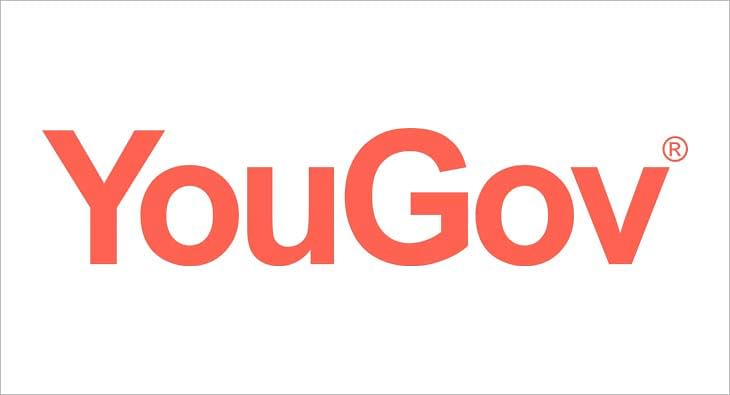
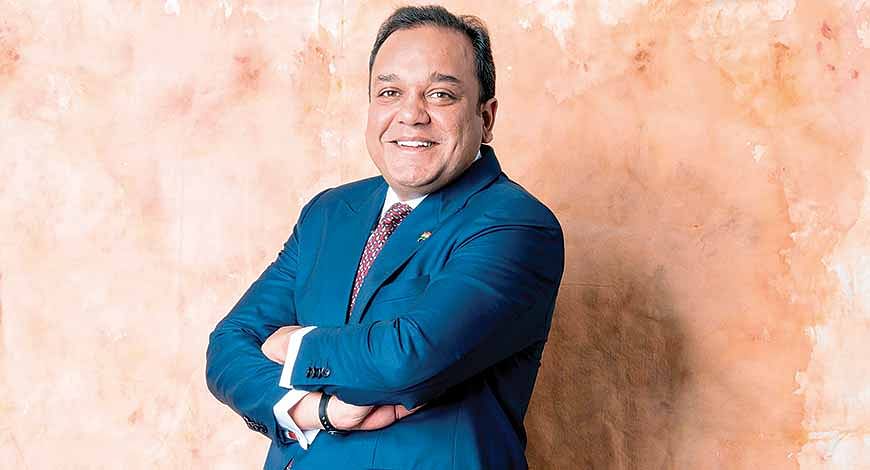
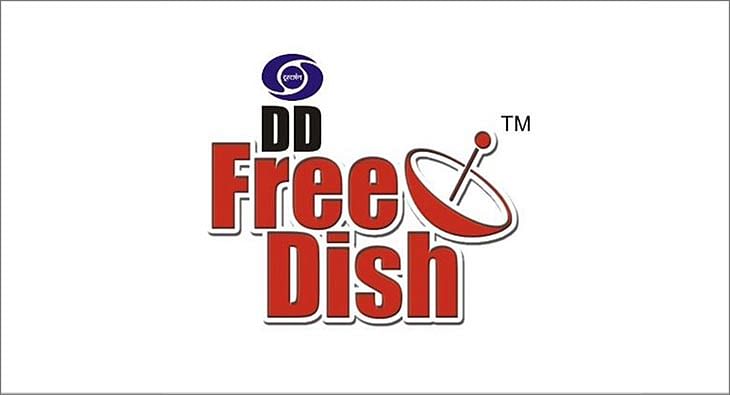







 Share
Share